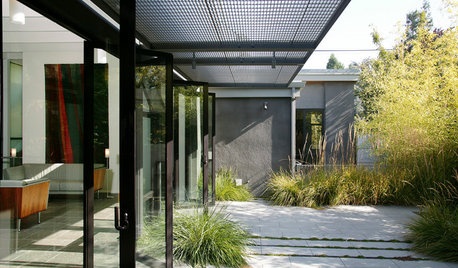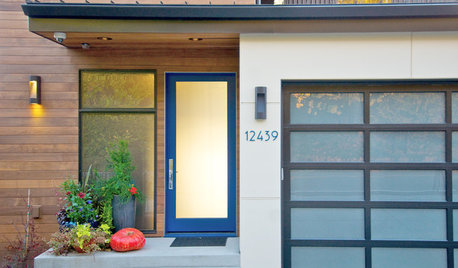Air layering--questions regarding wounding, girdling, bridges.
George_in_MA
19 years ago
Related Stories

EXTERIORSPros Answer Your Questions About Metal-Frame Doors
Find out what to consider when adding these chic, industrial-style interior and exterior doors
Full Story
DOORS5 Questions to Ask Before Installing a Barn Door
Find out whether that barn door you love is the right solution for your space
Full Story
ENTRYWAYSGlass Doors That Welcome — and Protect Your Privacy Too
These front-door designs let in the light but keep your air-guitar performances safely in-house
Full Story
PETSSo You Want to Get a Cat
If you're a cat lover, the joys outweigh any other issue. If you haven't lived with one yet, here are a few things to know
Full Story
BASEMENTSDesign Workshop: Is It Time to Let Basements Become Extinct?
Costly and often unnecessary, basements may become obsolete — if they aren’t already. Here are responses to every reason to keep them around
Full Story
CONCRETEWhy Concrete Wants to Crack
We look at the reasons concrete has a tendency to crack — and what you can do to help control it
Full Story
EARTH DAYThe Case for Losing the Traditional Lawn
Work less, help the environment and foster connections by just saying no to typical turf
Full Story
MOST POPULARIs Open-Plan Living a Fad, or Here to Stay?
Architects, designers and Houzzers around the world have their say on this trend and predict how our homes might evolve
Full Story
REMODELING GUIDESWhy Marble Might Be Wrong for Your Bathroom
You love its beauty and instant high-quality appeal, but bathroom marble has its drawbacks. Here's what to know before you buy
Full Story
HOUZZ TV FAVORITESHouzz TV: A New England Farmhouse Explodes With Color
Creativity and color burst from every corner in this unique 18th-century Massachusetts home for an artist and her family
Full Story







TurtleBo
George_in_MAOriginal Author
Related Professionals
Kenmore Landscape Architects & Landscape Designers · Manchester Landscape Contractors · College Park Landscape Contractors · Coram Landscape Contractors · Costa Mesa Landscape Contractors · Dudley Landscape Contractors · Goodlettsville Landscape Contractors · Huntley Landscape Contractors · Kearny Landscape Contractors · Riverhead Landscape Contractors · Riverview Landscape Contractors · Whittier Landscape Contractors · Highland Springs Decks, Patios & Outdoor Enclosures · Oak Ridge Decks, Patios & Outdoor Enclosures · Waukesha Decks, Patios & Outdoor Enclosuresbonsai_moss
Bonsai_Richard
bushwhacker
tapla (mid-Michigan, USDA z5b-6a)
peterca
yama
kylezo
njbiology